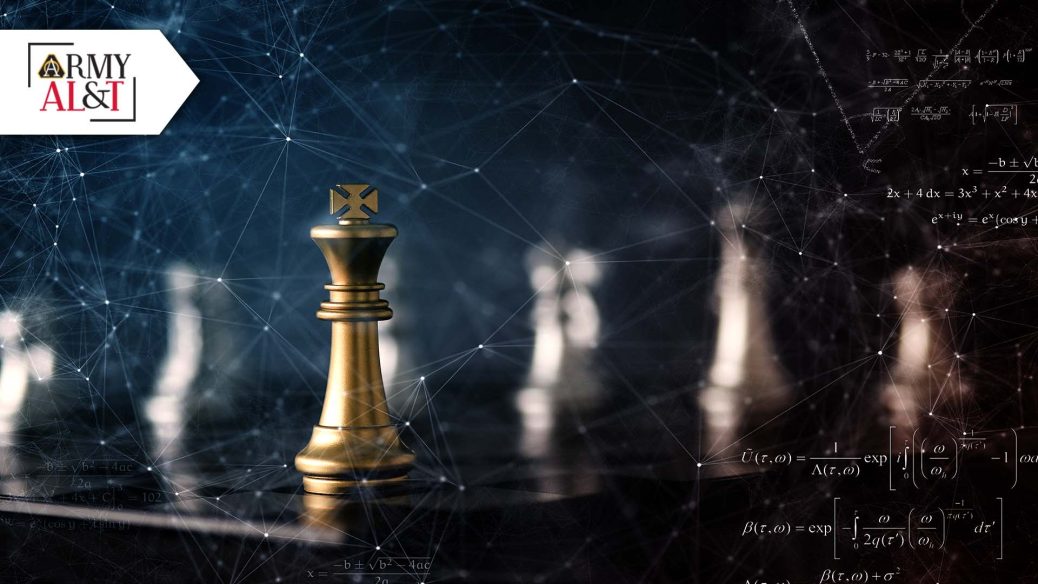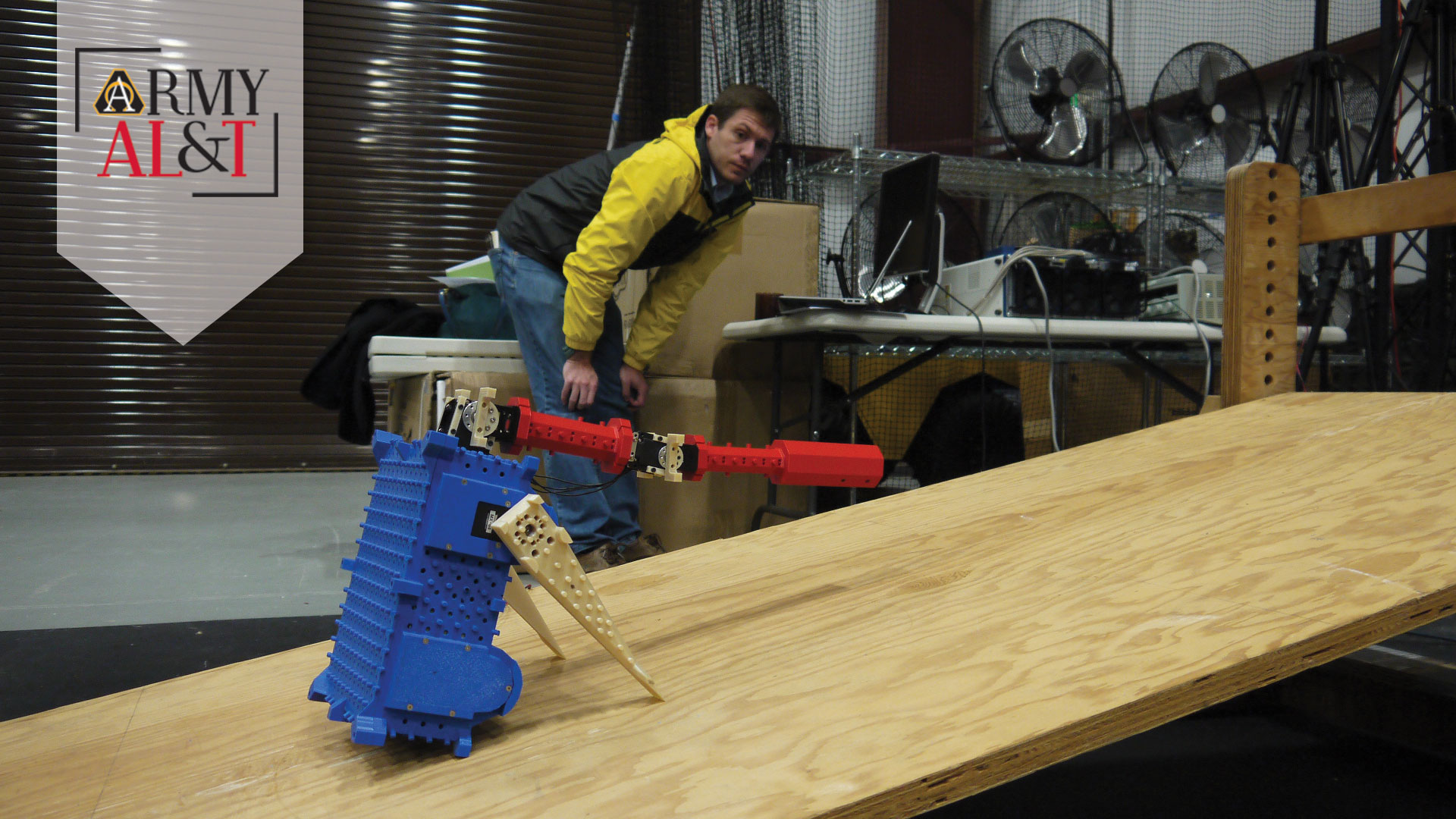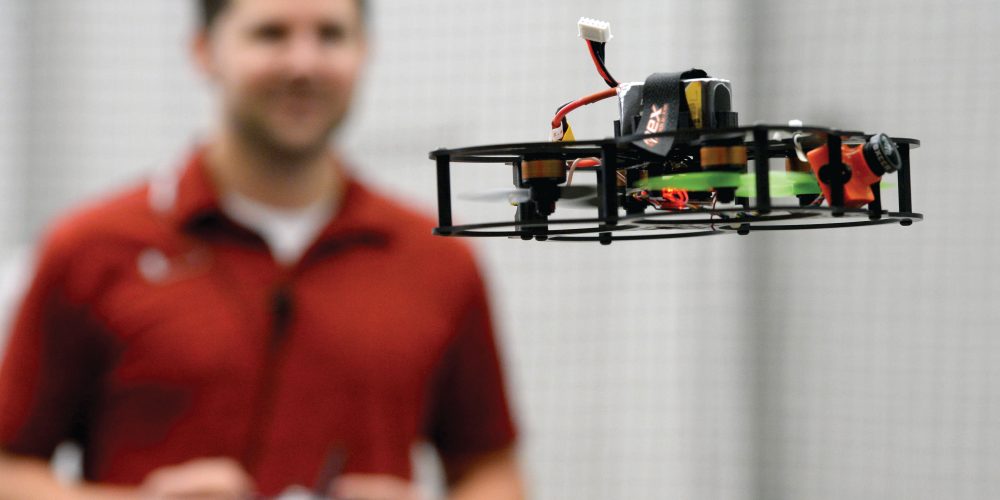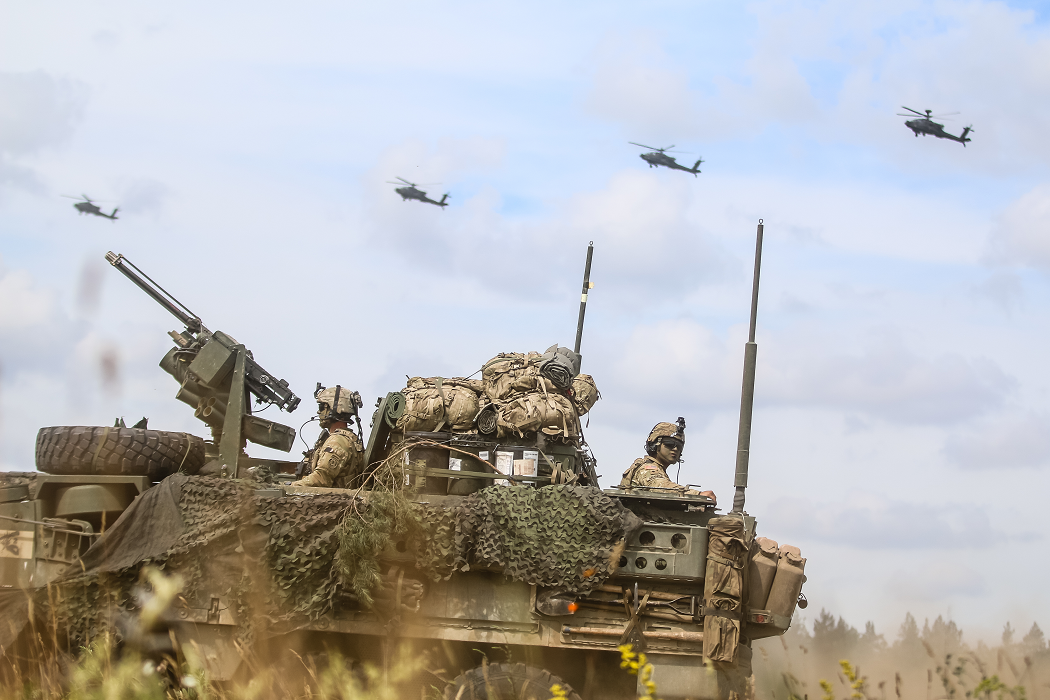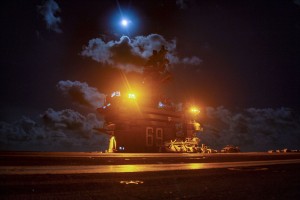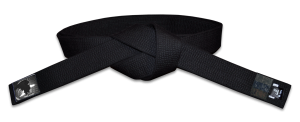SYSTEMATIC STRATEGY: Military leaders, like grandmasters, must seek to understand the board, the position of the pieces and their own limitations and tendencies.
The science of decisions is a new science for future military leaders.
by Richard A. Nabors, Ph.D., Nathan Burkholder and Jacqueline A. Randall
We all know that chess is a thinking game, but did you know there is a science to winning? In 2004, cognitive scientists Michelle Cowley and Ruth Byrne published a major scholarly article titled “Chess Masters’ Hypothesis Testing.” The report resulted from an empirical study in which six positions were created halfway through a chess game for 20 players, including both amateurs and grandmasters.
The authors concluded that what differentiated the grandmasters from the novice players was using a scientific approach to making decisions. The approach, called falsification, ultimately led to more accurate and winning moves.
THE SCIENCE OF WINNING
The process of making hypotheses and trying to disprove them by testing their limitations, before committing resources to that hypothesis, is called falsification. Austrian-English philosopher Karl Popper (1902-1994) coined the term “falsification” in his 1937 book, The Logic of Scientific Discovery. Popper’s view is that scientific theories can never be proven true, but they also cannot be disproven; instead, they are either supported or refuted based on their ability to withstand attempts at falsification. The more you try to disprove the theory and it withstands your attempts to falsify it, the more you can consider that theory to be well-supported.
For chess players to win, they must predict their opponents’ next possible moves through what is called “look-ahead.” In essence, the difference between a winning player and a losing one is the ability to gather information from a wider field of possibilities and identify the more likely outcomes. Once these possible scenarios have been identified, players can quickly and confidently move their chess piece to the next best position, prepared for whatever move the opponent might make.
Military leaders find themselves facing the same set of challenges in today’s complex, multi-varied threat environment. They must understand their position, look ahead across multiple scenarios and make time-sensitive decisions based on real-time changes, all with the knowledge that each decision may have lasting consequences far into the future. Many science and technology (S&T) labs and centers within the Army, including the U.S. Army Combat Capabilities Development Command (DEVCOM) C5ISR Center and Army Research Laboratory, are working on programs of significant impact in bringing needed sensing and network capabilities to our Soldiers. Army S&T is dedicated to investing in technologies that support our Soldiers’ constant situational understanding of the battlespace and provide future military leaders with information needed for significant decision-making advantage over the opposition.

FACING OFF: Knights on a chess board, like Soldiers on the battlefield, must prepare accordingly for battle.
CHESS AND DECISION DOMINANCE
Chess is a game of decision dominance, where one player’s decisions are ultimately proven better than the other. This decision dominance often leads weaker players to recognize their position and resign before the game is over. It’s the same in the military: the goal of decision dominance is not to destroy your enemy, but to force the enemy to surrender or not go into war against you in the first place. It’s the desire to outthink rather than obliterate your opponent, moving away from the “war of attrition” to a “war of decision.”
“Decision dominance is now possible by exploiting technology and innovation to achieve long-term success through economical effects-based planning,” wrote U.S. Air Force Lt. Col. Merrick E. Krause in a 2003-article for Defense Horizons, a National Defense University publication. “This concept is a departure from the traditional Napoleonic war-fighting philosophies of attrition or annihilation,” Krause said.
“Science is about gaining useful knowledge in a systematic way to solve problems,” writes Devin Camenares, the author of the chess blog “the Science on the Squares.” “Chess players engage in a similar activity all the time if even subconsciously, studying games and reading literature to build a model of the game in their mind that can be applied to making decisions at the board. Likewise, scientific knowledge about the natural world has informed incredible advances in technology for a wide range of industries.”
Like chess players, military leaders must be empowered with the resources needed to apply the same study and scientific approach to solving military challenges. Camenares has identified three areas where science and a scientific approach can benefit chess players in decision making and, by extension, can have broader application to military decision-making: Informatic analytics, position analytics and psychological analysis.

HARNESSING TECHNOLOGY: Science and scientific methodologies can help military leaders better leverage their resources and decision processes to greater advantage.
UNDERSTANDING THE BOARD
Informatic analytics is about trying to know as much as possible about your opponent, the board and the game in advance. It’s about creating scientific metrics around human decision-making processes and understanding how that shapes the environment in which you are engaged. In chess, informatics could be applied to make predictions about the winning chances offered by a certain opening move. Other questions that could be answered include which squares are most often used. Knowing that information could do a lot to shape a player’s strategy, before ever moving the first piece.
Camenares goes on to suggest the need in chess to quantify time (speed) and material imbalances (chess pieces, or in military parlance, “platforms”) and to develop models around these constraints. These same challenges of understanding predictable behavior, common patterns, time and material imbalances are exactly the same objectives facing military leaders. It’s the ability to look ahead or calculate what could happen in any given situation and how it might affect your current position. This involves looking at all possible scenarios from every angle so that you can take advantage of whatever opportunities arise along the way—both favorable ones and unfavorable ones.
Christian Brose published a best-selling book in 2020 called “The Kill Chain: Defending America in the Future of High-Tech Warfare.” In it, he explains how the Chinese military is taking a decision-centric approach to fighting wars against the United States, capitalizing on their strengths while giving the Americans little chance to respond with a counter-punch using our superior military platforms, like an elaborate chess game.
“Over the past decade, in U.S. war games against China, the United States has a nearly perfect record: We have lost almost every single time,” writes Brose in his book, arguing that while China’s attack weapons are not as advanced, they have smartly used technology to render many United States forces “deaf, dumb and blind.”
Future military leaders need the information derived from war games and simulations to shape their understanding of needed capabilities which will, in turn, influence investments in technology and science. It takes many decades to change the major pieces (military platforms) available on the board, but significant optimization is currently possible through the integration and networking of sensor and communication technologies within these legacy systems. Military leaders need to be able to conduct many, fast, low-cost, strategic exercises, and aggregate analysis across all of these activities to find the patterns and insights that will allow them to best understand the “board” and how technology investments in specific areas can give their pieces the maximum advantage.
UNDERSTANDING YOUR OPTIONS
Position analytics is the ability to evaluate the position you’re in and determine whether it’s a good or bad spot. It also includes understanding how your opponents might have assessed that same position, which can sometimes lead them to make assumptions about what they think is happening when their hypotheses are wrong (i.e., thinking you don’t see an attack). Chess players use computer engines, such as lichess.org, to study positions and narrow down the possibilities in advance, so they don’t have to spend time thinking about every possible move.
While in the real world of warfare, computers may never replace human intelligence, but they can help improve decision-making by providing objective analysis and rapid feedback. In military terminology, this is where sensor data, decision processing, communication and execution capabilities merge into a real-time tactical or strategic advantage. For future military leaders to make timely decisions in combat, they need accurate data on everything going on around them—from the locations of friendly forces and enemy units, to weather reports, geography information and more. Not only do they need this sensory information but they also need to be able to process it and communicate it in near real-time.
The appointment of Heidi Shyu, an American engineer, to be the undersecretary of defense for research and engineering—also referred to as DOD’s chief technology officer—underpins the recognition by DOD leaders that technology is critical in helping to inform decision-making in wartime. In 2021, Shyu stated during a Senate hearing that the United States must invest more in technologies to counter what she called “the pacing threat” from China.
“DOD should avoid replicating private-sector research and should focus its investments on the innovative technologies that DOD uniquely needs but that the commercial sector is not developing on its own,” she said, adding that the United States must invest more in new technologies rather than the so-called “legacy systems.”

THE RIGHT MOVE: As the best chess players in the world look ahead at all possible scenarios to determine outcomes, future military leaders need information derived from war games and simulations to form an understanding of needed capabilities.
UNDERSTANDING YOUR BLIND SPOTS
Psychological analysis is about understanding how our opponents think and make decisions. It’s also about knowing how they evaluate their own positions and what the best move is for them to make, based on that evaluation. Here is where the Einstellung effect comes in. The Einstellung effect is a state of mind triggered by years of experience in chess playing and has been documented to affect all decision-making.
Einstellung is the German word for “setting” or “attitude.” In psychology, it’s one concept from Gestalt theory about how preconceptions often distort our thinking. When we are exposed to one stimulus and then another, we tend to respond only to the second stimulus. This is called “sensory adaptation.” For instance, if you are looking for a green sweater in your closet but all you see are red ones, you will not find it because your brain has grown accustomed to seeing other colors rather than green. This also applies to decision-making in chess and in the military, as it affects how people make decisions about what is happening around them—their minds have already been made up by previous thoughts, before making a move.
In other words, expertise and knowledge may lead to overconfidence in one’s methods and an unwillingness to consider alternative solutions to a problem. Military leaders may become fixated on the right move to make, not because it’s necessarily the best one but because they are confident in their abilities. In psychology, this phenomenon is also called “tunnel vision.”
This has been shown to happen more often among military leaders who have many years of experience and training with making decisions on the battlefield. It’s a natural result of being trained to make decisions in specific ways for so long, but it can lead to errors and mistakes that cause more harm than good if you’re not careful about what your options are or how much time is left on the clock when making an important decision.
Look at what the Chinese have developed to counter our advanced fighter jets: anti-access and area denial capabilities. Anti-access and area denial (A2/AD) are terms broadly used to refer to a Chinese (or Russian) military strategy in which air and naval power are used to control the combat region, making it difficult for an opponent’s armed forces to come within a striking range of territory.
“If the DOD cannot move beyond A2/AD, it risks wasting billions of taxpayer dollars building a future force based on a flawed premise,” wrote Chris Dougherty, a senior fellow in the Defense Program at the Center for a New American Security, in December of 2021. “More worryingly, it puts the United States at greater risk of losing a future war against China or Russia.”
Future military leaders face the same challenge of avoiding the tunnel vision that comes from the decades of military excellence and global domination that the United States has enjoyed. The scientific community has a unique opportunity and obligation to help support military leaders in questioning their assumptions, and in some cases traditions, that may create an artificial blind spot that could be exploited through innovative thinking on the part of an adversary. Military leaders need to help identify and formalize opportunities for the science and technology community to influence the war games, scenarios and strategies with orthogonal thinking, based on emerging science rather than traditional approaches.
THE NEW SCIENCE
“Chess helps you to concentrate, improve your logic. It teaches you to play by the rules and take responsibility for your actions, how to problem solve in an uncertain environment.” –Garry Kasparov
Military leaders, like grandmasters, must seek to understand the board, the position of the pieces and their own limitations and tendencies. Science and scientific methodologies can help military leaders better leverage their resources and decision processes to greater advantage, just as the Chinese are doing with anti-access and area denial. To achieve decision dominance, future leaders need to move away from focusing on a small number of large platform-centric investments, to more innovative approaches that result in less predictable and better survivable systems and capabilities. Platforms must be seen as containers for new technologies, such as software, sensors and the C5ISR architecture. With more of these options available to them, future military leaders, like chess grandmasters, will be able to anticipate how their opponents will react to the moves they make and give themselves a variety of different options that can counter any potential threat.
For more information on the C5ISR Center and its mission, visit https://c5isr.ccdc.army.mil/.
RICHARD A. NABORS, Ph.D., is the principal deputy director of the DEVCOM C5ISR Center Research and Technology Integration (RTI) Directorate. He holds a doctorate in management from the University of Phoenix, an M.S. in management from the Florida Institute of Technology and a B.A. in history from Old Dominion University. He is Level I certified in program management.
NATHAN BURKHOLDER is a strategic analyst for KITEWIRE Inc. who supports the C5ISR RTI Directorate. He holds a B.S. in engineering from Messiah University (formerly Messiah College).
JACQUELINE A. RANDALL is a DOD contractor with AnaVation, LLC, supporting the C5ISR RTI Directorate. She holds a B.A in psychology from Siena College. She is a certified associate in project management.

